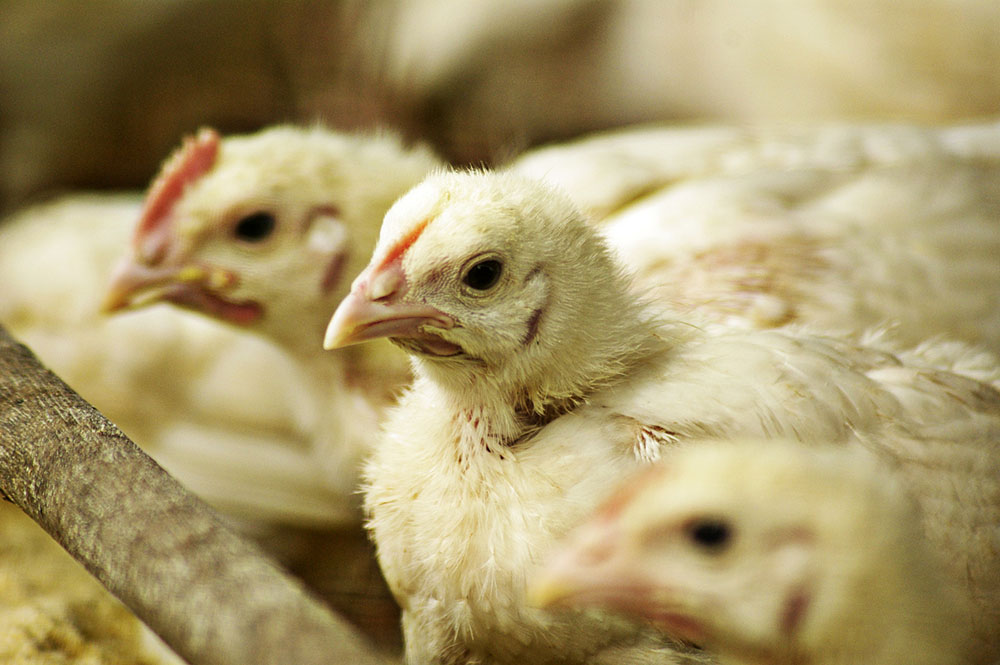Analysis of Poultry Litter

Background
The compositions of animal wastes is a complex issue, with the composition dependent on the class of animal, diet, digestibility of food, bedding, and stage of growth, among other factors.Poultry litter is a mixture of poultry manure and the litter base, which can be straw, wood shavings, paper, or other biodegradable material.
The relative amount and type of manure produced will depend on the livestock class. For example, broilers produce about 0.036 kg/bird/day at 70% dry matter. Of this, about 70% by dry weight is manure, and the remainder is the litter base.
Analysis of Poultry Litter at Celignis
Celignis Analytical can determine the following properties of Poultry Litter samples:
Sugars (Monosaccharides)
Sugar Alcohols and Uronic Acids
Lignin and Extractives
- Lignin (Klason)
- Lignin (Klason - Protein Corrected)
- Lignin (Acid Soluble)
- Acid Insoluble Residue
- Extractives (Ethanol-Soluble)
- Extractives (Water-Soluble)
- Extractives (Exhaustive - Water then Ethanol)
- Lignin S/G Ratio
- Extractives (Water-Insoluble, Ethanol Soluble)
- Protein Content of Acid Insoluble Residue
- Carbon Content of Acid Insoluble Residue
- Hydrogen Content of Acid Insoluble Residue
- Nitrogen Content of Acid Insoluble Residue
- Sulphur Content of Acid Insoluble Residue
Amino
Acids
Thermal Properties
- Moisture
- Ash
- Ash (Acid Insoluble)
- Carbon
- Hydrogen
- Nitrogen
- Sulphur
- Oxygen
- Volatile Matter
- Fixed Carbon
- Gross Calorific Value
- Net Calorific Value
- Chlorine
- Ash Shrinkage Starting Temperature (Oxidising)
- Ash Deformation Temperature (Oxidising)
- Ash Hemisphere Temperature (Oxidising)
- Ash Flow Temperature (Oxidising)
- Ash Shrinkage Starting Temperature (Reducing)
- Ash Deformation Temperature (Reducing)
- Ash Hemisphere Temperature (Reducing)
- Ash Flow Temperature (Reducing)
- Thernogram - Under Nitrogen
- Thermogram - Under Air
Major and Minor Elements
Cellulose Content of Poultry Litter
The cellulose content of the poultry litter will depend on the compositions of both the manure and the litter base and on the relative mass proportions that each of these contribute to the total litter mass. Typically, the base has a higher cellulose content than the manure, meaning that an increased base:manure mass ratio will lead to a higher cellulose content.Click here to see the Celignis Analysis Packages that determine cellulose content.
Hemicellulose Content of Poultry Litter
As with cellulose, the hemicellulose content of the poultry litter will depend on the compositions of both the manure and the litter base and on the relative mass proportions that each of these contribute to the total litter mass.Click here to see the Celignis Analysis Packages that determine hemicellulose content.
Lignin Content of Poultry Litter
The lignin content of the poultry litter will depend on the compositions of both the manure and the litter base and on the relative mass proportions that each of these contribute to the total litter mass.Click here to see the Celignis Analysis Packages that determine lignin content.
Starch Content of Poultry Litter
The starch content of poultry litter will vary according to their diet.Click here to see the Celignis Analysis Packages that determine starch content.
Uronic Acid Content of Poultry Litter
Uronic acids are present in many of the feedstocks that are used to generate the bedding for poultry litter (e.g. straw, wood shavings), however we are not aware of any studies to date on the total uronic acid content of poultry litter.Click here to read more about uronic acids and to see the Celignis Analysis Packages that determine uronic acid content.
Enzymatic Hydrolysis of Poultry Litter
We can undertake tests involving the enzymatic hydrolysis of Poultry Litter. In these experiments we can either use a commercial enzyme mix or you can supply your own enzymes.We also offer analysis packages that compare the enzymatic hydrolysis of a pre-treated sample with that of the native original material.
Click here to read more about enzymatic hydrolysis and to see the various analysis packages that we offer.
Ash Content of Poultry Litter
As with other animal wastes, poultry manure can have a high ash content. However, the litter base typically has a lower ash content. Hence, an increased base:manure mass ratio will favour a lower total ash content in the poultry litter.Click here to see the Celignis Analysis Packages that determine ash content.
Heating (Calorific) Value of Poultry Litter
Unlike many other animal wastes, such as cattle and pig manures, poultry litter can have a relatively low moisture content (typically between 20 and 50%, depending on husbandry practices). Because of this, in recent years there has been increasing interest regarding the combustion of this resource.Click here to see the Celignis Analysis Packages that determine heating value.
Bulk Density of Poultry Litter
At Celignis we can determine the bulk density of biomass samples, including Poultry Litter, according to ISO standard 17828 (2015). This method requires the biomass to be in an appropriate form (chips or powder) for density determination.Click here to see the Celignis Analysis Packages that determine bulk density.
Basic Density of Poultry Litter
At Celignis we can determine the basic density of some suitable biomass samples. The method requires the biomass to be in an appropriate form (chips) for density determination.Click here to see the Celignis Analysis Packages that determine basic density.
| Previous Feedstock | Next Feedstock |
Go Back to List of Feedstocks.
Energy
Crops
Agricultural Residues and Wastes
Industrial Residues and Wastes
Municipal
Wastes
Biorefinery
Products






